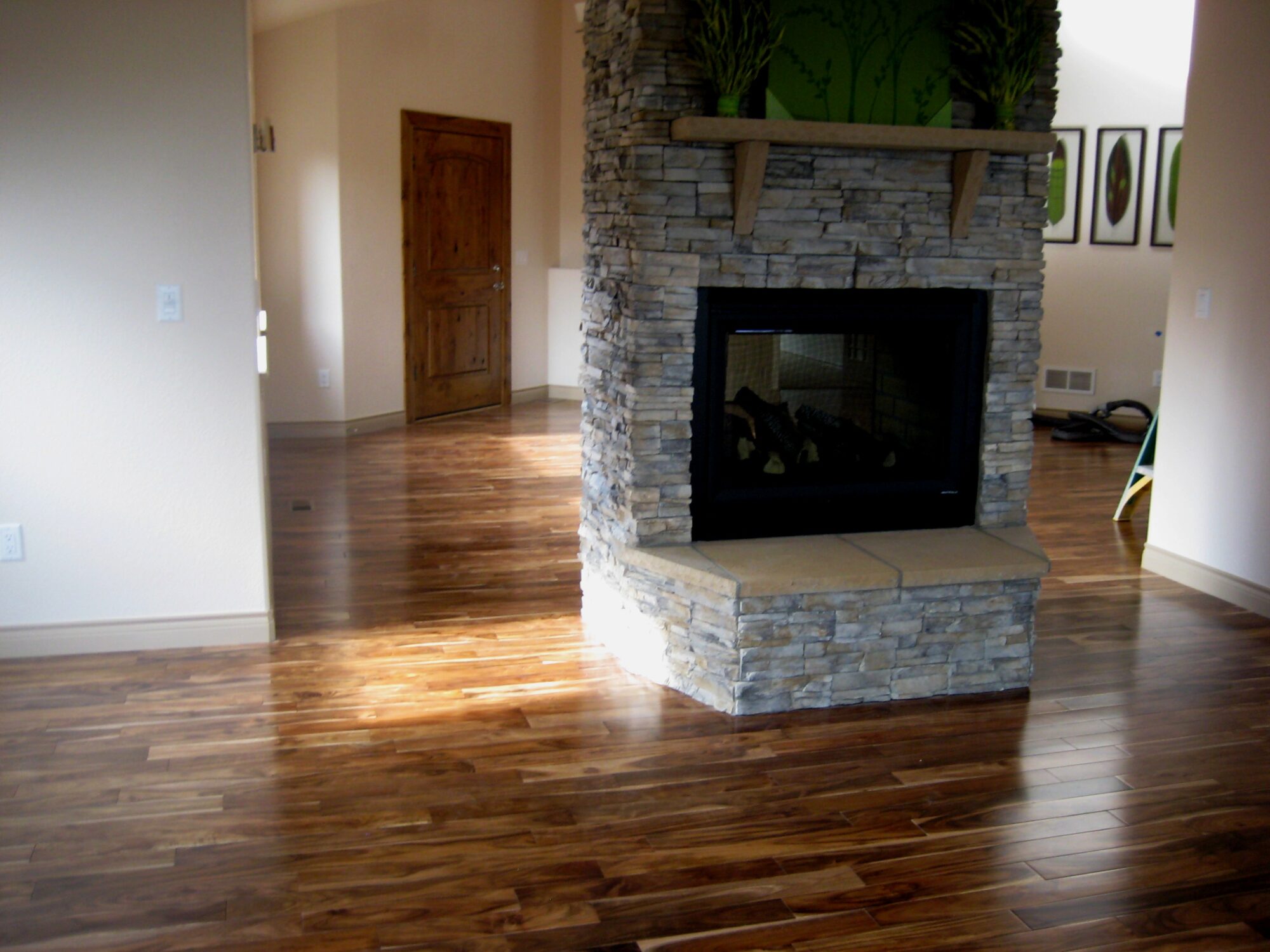If you are looking for unique flooring options, a little research into today’s trends is surely worth the effort. There are a few unique options now reaching our markets that may deserve strong consideration. One of the more unconventional choices that are rapidly increasing in popularity is the Asian Walnut wood floor. Asian Walnut, or Acacia as it is sometimes called, is a very tough little tree common to the aridest areas of Southeast Asia, India, Africa, and Australia. Its unique grain pattern makes it a perfect choice for open concept rooms and interior spaces. The wood’s distinctive grain pattern, large swirls, and loose grain structure give it one of the most unique appearances of any wood species.
Oak might be the most common wood flooring material that comes to mind, Asian Walnut Acacia hardwood flooring is certainly worth considering. The wood is certainly one of the most unique hardwood species available in the market today. There are several things to think about if you are considering using this exotic wood species.
Sources
There are various sources for information and the purchase of Asian Walnut flooring materials. You can check with local dealers, the chain home improvement stores, liquidators, or online flooring wholesalers. Local dealers offer convenience and knowledge but typically lack the most competitive pricing. On the surface, liquidators seem to offer good deals, however, may come with a limited warranty or poor quality. In many cases, once the inventory is gone the product is no longer available.
Internet flooring stores and wholesalers offer the most competitive pricing. An online flooring wholesaler like Unique Wood Floors offers competitive pricing along with the knowledge of flooring knowhow.
Unfinished or Factory Finish
While it is true that any hardwood floor is subject to dents, scratches, and scuff marks, the harder the wood, the less likely they are to happen. Asian Walnut Acacia scores very high on the Janka Scale coming in around 2,300. The Janka scale is a measurement used to determine the hardness of a hardwood species. The higher the number, the harder the wood is. At 2300 Asian Walnut is much harder than common domestic wood species such as Oak and Maple.
The wood hardness of Asian Walnut is a definite plus in terms of the durability it displays while in your home. However, keep in mind that if you buy unfinished material, Asian walnut wood flooring it may not have the longevity of a factory prefinished product. Onsite finishing lacks the durability of factory finished products because the installer cannot duplicate the heat and pressure applied to boards that are processed in a factory during the manufacturing process. Factory finished means an application of multiple protective coats of polyurethane, aluminum oxide, or a combination of both in a controlled setting using special machinery. A factory finish can provide the ultimate durability protection that there is for wood flooring.
Color Choice
The depth of color and a vibrant range of stains are one of the special features of this wood flooring material. While natural is the most common color, it’s actually just an unstained board with a protective clear finish. The natural Asian Walnut boards will have a wide variety of color that may range from dark brown to light blonde. The darker colors can be slightly more prevalent due to the predominance of naturally occurring darker wood.
There are also a few dark stains options in colors such as Bronze and Sagebrush stained Asian Walnut floors. These have a very similar appearance to domestic Black Walnut flooring. These stains have a much deeper darker hue than other colors and can achieve a nice alternative to the prestigious Black Walnut.
Hints and Tips
1. Getting multiple samples of Asian Walnut hardwood flooring allows you to see a better representation of your finished floor. Asian Walnut Acacia wood has quite a large variation of characteristics between every board. Two samples will give you a much better idea of what your overall floor may look like.
2. Requesting installed room pictures from your dealer is a great idea. Combining your room scene pictures and two samples will allow you to make much-informed flooring decisions.
3. Buy one box of boards after you have decided on a specific color allows you to bring your design idea home. It also provides the opportunity to loosely lay out your floor in an area of your home to make sure you like quality. Even if you cannot send the box back to the dealer your initial investment will be minimal compared to purchasing an entire job.

